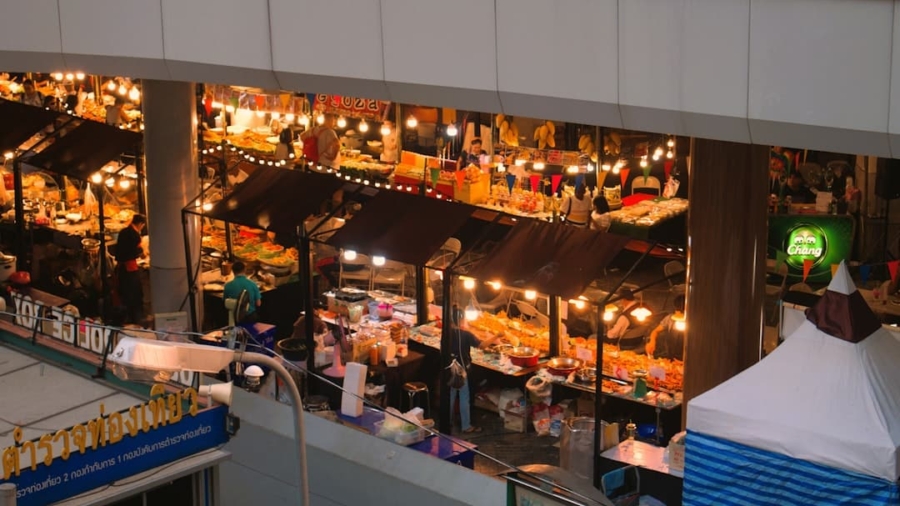The rise of non-fungible tokens (NFTs) has revolutionized the way digital assets are bought, sold, and owned. NFT marketplaces serve as the primary platforms where creators, collectors, and investors converge to trade these unique digital items. Unlike traditional cryptocurrencies, which are fungible and can be exchanged on a one-to-one basis, NFTs represent ownership of a specific item or piece of content, often linked to art, music, videos, and even virtual real estate.
The allure of NFTs lies in their ability to provide verifiable ownership and provenance through blockchain technology, which records every transaction in a transparent and immutable manner. As the NFT market has expanded, so too have the marketplaces that facilitate these transactions. Platforms like OpenSea, Rarible, and Foundation have emerged as leaders in this space, each offering unique features and user experiences.
OpenSea, for instance, is known for its vast selection of digital assets and user-friendly interface, while Rarible emphasizes community governance through its native token. These marketplaces not only provide a venue for buying and selling NFTs but also foster communities of artists and collectors who share a passion for digital creativity. The rapid growth of NFT marketplaces has sparked discussions about their impact on the art world, the economy, and the future of digital ownership.
Key Takeaways
- NFT marketplaces are online platforms where users can buy, sell, and trade non-fungible tokens representing digital art, collectibles, and other unique items.
- The evolution of artist royalties in NFTs has led to new opportunities for creators to earn ongoing income from the resale of their digital works.
- Challenges for NFT marketplaces include issues of copyright infringement, scalability, and the environmental impact of blockchain technology, while opportunities include global reach and new revenue streams for artists.
- Innovations in NFT marketplaces and artist royalties include smart contracts that automatically distribute royalties to creators and fractional ownership of digital assets.
- Blockchain technology has had a significant impact on NFT marketplaces by providing transparency, security, and provenance for digital assets.
Evolution of Artist Royalties in NFTs
Artist royalties have undergone a significant transformation with the advent of NFTs. Traditionally, artists received a one-time payment for their work, with little to no ongoing compensation as their art appreciated in value or changed hands in the secondary market. This model often left creators at a disadvantage, as they were unable to benefit from the increasing worth of their creations over time.
However, NFTs have introduced a new paradigm where artists can embed royalty structures directly into the smart contracts that govern their tokens. This innovation allows creators to earn a percentage of sales every time their work is resold. For example, an artist might set a royalty rate of 10% on their NFT.
If the NFT is initially sold for $1,000 and later resold for $5,000, the artist would receive $500 from that secondary sale. This mechanism not only incentivizes artists to create high-quality work but also aligns their financial interests with those of collectors and investors. As the NFT market matures, various platforms are experimenting with different royalty models, including fixed percentages and tiered structures based on resale prices.
This evolution reflects a growing recognition of the importance of sustaining artists’ livelihoods in an increasingly digital economy.
Challenges and Opportunities for NFT Marketplaces

While NFT marketplaces present exciting opportunities for artists and collectors alike, they are not without challenges. One significant issue is the environmental impact associated with blockchain technology, particularly those that rely on proof-of-work consensus mechanisms like Ethereum. The energy consumption required for minting and trading NFTs has raised concerns among artists and environmental advocates alike.
As awareness of climate change grows, many creators are seeking more sustainable alternatives or platforms that prioritize eco-friendly practices. Another challenge facing NFT marketplaces is the prevalence of copyright infringement and plagiarism. With the ease of creating and minting NFTs, some individuals have taken advantage of this by selling works that they do not own or have rights to.
This has led to disputes between original creators and those who profit from unauthorized sales. Marketplaces are grappling with how to implement effective verification processes to protect artists’ rights while maintaining an open and accessible platform for creators. The balance between fostering creativity and ensuring legal compliance remains a critical issue as the market continues to evolve.
Innovations in NFT Marketplaces and Artist Royalties
Innovation is at the heart of the NFT marketplace ecosystem, driving new features and functionalities that enhance user experience and artist engagement.
Platforms are increasingly incorporating social networking elements that allow artists to connect with fans and collectors directly.
This fosters a sense of community and enables creators to build their brand while engaging with their audience in meaningful ways. Additionally, some marketplaces are exploring dynamic royalty structures that adapt based on market conditions or collector behavior. For instance, an artist might choose to adjust their royalty percentage based on how frequently their work is resold or how much it appreciates in value over time.
This flexibility could empower artists to tailor their compensation models to better reflect their evolving relationship with collectors. Furthermore, innovations such as fractional ownership are gaining traction, allowing multiple investors to own a share of high-value NFTs. This democratizes access to expensive digital assets while providing artists with new avenues for monetization.
Impact of Blockchain Technology on NFT Marketplaces
Blockchain technology serves as the backbone of NFT marketplaces, providing the infrastructure necessary for secure transactions and verifiable ownership. The decentralized nature of blockchain ensures that no single entity controls the data or transactions, fostering trust among users. Each NFT is minted on a blockchain, typically Ethereum or other compatible networks like Binance Smart Chain or Flow, which records all ownership transfers and transaction history in an immutable ledger.
The transparency afforded by blockchain technology not only enhances security but also enables artists to track the provenance of their work. This is particularly important in an era where authenticity is paramount; buyers want assurance that they are purchasing genuine pieces from original creators. Moreover, blockchain facilitates interoperability between different marketplaces, allowing users to trade NFTs across platforms seamlessly.
This interconnectedness can lead to increased liquidity in the market, benefiting both artists and collectors by expanding their reach and potential sales opportunities.
Legal and Ethical Considerations for Artist Royalties in NFTs

As the NFT market continues to grow, legal and ethical considerations surrounding artist royalties have come to the forefront. One pressing issue is the lack of standardized regulations governing royalties across different platforms.
This inconsistency can create confusion for artists who rely on these royalties as a source of income. Additionally, questions surrounding intellectual property rights remain complex in the context of NFTs. Artists must navigate a landscape where copyright laws may not fully address the nuances of digital ownership and tokenization.
For instance, when an artist mints an NFT representing their work, they may inadvertently transfer certain rights to the buyer unless explicitly stated otherwise in the smart contract. This ambiguity can lead to disputes over ownership rights and usage permissions, underscoring the need for clearer legal frameworks that protect both creators and collectors.
The Role of Decentralized Finance (DeFi) in NFT Marketplaces
Decentralized finance (DeFi) is increasingly intersecting with NFT marketplaces, creating new opportunities for artists and collectors alike. DeFi protocols enable users to leverage their NFTs as collateral for loans or engage in yield farming by staking their digital assets. This integration allows artists to unlock liquidity from their creations without having to sell them outright, providing a means to access funds while retaining ownership.
For example, an artist could use an NFT representing their artwork as collateral for a loan on a DeFi platform. By doing so, they can secure funding for new projects or personal expenses while still benefiting from potential future appreciation in value. Additionally, some DeFi platforms are exploring ways to create liquidity pools specifically for NFTs, allowing users to trade fractionalized shares of high-value tokens.
This not only democratizes access to expensive digital assets but also encourages broader participation in the NFT ecosystem.
Predictions for the Future of NFT Marketplaces and Artist Royalties
Looking ahead, the future of NFT marketplaces and artist royalties appears poised for continued evolution and growth. As more artists embrace digital mediums and explore innovative ways to monetize their work through NFTs, we can expect an influx of diverse content across various genres and styles. This diversification will likely lead to increased competition among marketplaces as they strive to attract both creators and collectors.
Moreover, advancements in technology will play a crucial role in shaping the landscape of NFT marketplaces. The development of layer-2 solutions aimed at reducing transaction costs and improving scalability could enhance user experience significantly. Additionally, as regulatory frameworks become clearer around intellectual property rights and royalties, artists may find greater security in their ability to earn ongoing compensation from their work.
In conclusion, while challenges remain within the NFT marketplace ecosystem—ranging from environmental concerns to legal ambiguities—the potential for innovation and growth is immense. As artists continue to explore new avenues for creative expression through NFTs, they will likely find themselves at the forefront of a transformative movement that redefines ownership in the digital age.
The future of NFT marketplaces and artist royalties is a topic of significant interest as the digital art world continues to evolve. As artists and creators seek fair compensation for their work, the structure of royalties in NFT transactions becomes crucial. For those interested in the broader context of technological advancements and their impact on various sectors, an insightful related article can be found on Hacker Noon. This article covers a range of topics across the tech sector, providing a comprehensive view of how technology is reshaping industries. You can read more about these trends by visiting Hacker Noon Covers a Range of Topics Across the Tech Sector.
FAQs
What are NFT marketplaces?
NFT marketplaces are online platforms where users can buy, sell, and trade non-fungible tokens (NFTs). These marketplaces often specialize in digital art, collectibles, and other digital assets.
What is an NFT?
NFT stands for non-fungible token, which is a digital asset that represents ownership or proof of authenticity of a unique item or piece of content, such as digital art, music, videos, and more.
How do NFT marketplaces handle artist royalties?
NFT marketplaces can handle artist royalties by incorporating smart contracts that automatically distribute a percentage of the resale value to the original creator whenever an NFT is resold.
What is the future of NFT marketplaces and artist royalties?
The future of NFT marketplaces and artist royalties is likely to involve more sophisticated royalty structures, increased transparency, and improved mechanisms for creators to earn ongoing income from their work.
How do NFT marketplaces benefit artists?
NFT marketplaces benefit artists by providing a new way to monetize their digital creations, offering the potential for ongoing royalties from resales, and creating a direct connection with their audience.
What are some challenges facing NFT marketplaces and artist royalties?
Challenges facing NFT marketplaces and artist royalties include issues related to copyright, intellectual property, environmental concerns related to blockchain technology, and the need for greater standardization and regulation in the industry.

